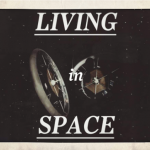NASA
"Building one space station for everyone was and is insane: we should have built a dozen." -Larry Niven
Here on the solid ground of the Earth, the Sun and Moon rise and set on a daily basis. During the hours where the Sun is invisible, blocked by the solid Earth, the stars twirl overhead in the great canopy of the night sky.
Image credit: Chris Luckhardt at flickr.
In the northern hemisphere, they appear to rotate around the North Star, while in the southern hemisphere, the stars appear to rotate about the South Celestial Pole. The longer you observe -- or for photography, the longer you…
In which NASA gets presented with two Hubble class wide field space telescopes...
Oh my. So some of the mysterious maneuverings at NASA's Astrophysics division can now be better understood.
The National Reconnaissance Office was sitting on a couple of spare space telescopes they are willing to transfer to NASA.
These are presumably late block Keyhole reconnaissance satellite spares, maybe even the two extras orders a few years ago at the end of the program.
So, state of the art as of 10-20 years ago.
We are looking at two partial telescopes, with a Hubble size primary mirror, 2.4m, but…
The word came out last night that the GEMS Small Explorer Class Mission has been cancelled.
GEMS is an x-ray polarimetry mission, using new detector technology, and the rumours (from the "Astronomers" group on fb) are that an Independent Cost Estimate showed the mission blowing its budget.
The mission passed a design review earlier this spring, but was red flagged on the mission chart at a recent NASA Astrophysics status presentation.
Now, some of you may remember the flap over the NASA Senior Review last month.
A review of ongoing missions recommended that all be continued at present level…
By Larry Bock
Founder and Organizer, USA Science & Engineering Festival
Planet Earth -- that fragile blue marble in space that we call home -- deserves better from all of us, I think we would agree.
And for good reason. With such issues as energy, pollution, conservation and sustainability, and climate becoming rising worldwide concerns, it behooves everyone to do their part to make sure she thrives -- and survives.
NASA astronaut Ron Garan said last year after returning from spending more than five months on the International Space Station situated 250 miles above Earth: "I looked down…
In 1977, NASA sent a pair of unmanned probes named Voyager 1 and Voyager 2 into space. Among the infrared spectrometers and radio receivers included on each probe were identical copies of the same non-scientific object: the Voyager Golden Record.
Sheathed in a protective aluminum jacket, the Record is a 12-inch gold-plated copper disk containing sounds and images chosen to portray the diversity of life on Earth: bird calls, whale songs, the sounds of surf, wind, and thunder, music from human cultures, and some 55 greetings in a range of languages, alive and dead. Like lonely time capsules,…
On Dynamics of Cats, Steinn Sigurðsson flags a few foreboding articles on the future of NASA. Sigurðsson says the orbiting telescope Galex, or Galaxy Evolution Explorer, will be shut down later this year despite continuing to function. NASA has withdrawn from the international research mission known as ExoMars, and many other "2011-12 programs appear effectively suspended pending the 2012-13 budget, to the point where an entire funding cycle will be lost for some lines." Meanwhile, Ethan Siegel conjures up an apt scenario on Starts With a Bang, writing "Let's pretend that, for all of our…
By Larry Bock
Founder and organizer, USA Science & Engineering Festival
Tinkering -- that hands-on, garage-based tradition which sparked inventions ranging from the airplane and electric light bulb to the Apple computer -- is making a comeback among average Americans, promising to change our lives for the better on several fronts.
Known by such monikers as DIY (Do It Yourself) and the Maker Movement, its resurrection, fueled by the current economic downturn and the falling cost of high-tech tools and materials, stands not only to boost innovation and change how science is taught in the…
Vesta is the second biggest asteroid in the famous asteroid belt between Mars and Jupiter. It has generally been thought that Vesta would get enough sun over its entire surface that water would not survive, but a recent survey of the surface indicates that deeply buried water has a chance of remaining on the asteroid near the poles, or possibly at the bottom of some deep craters.
Vesta Up Close (image by NASA)
This is interesting, in part, because of questions about the role of water in the early formation of the solar system. One of the main objectives of the Dawn spacecraft mission is to…
"I read this book. It's pretty good even if they made it in a week. Worth the fifty bucks, easy."
Bruce Sterling
In February of this year, I had the distinct pleasure of being invited to the STUDIO for Creative Inquiry, a zygote of an institution nestled between departments at Carnegie Mellon University, to work on a strange collaborative project called a "booksprint." A booksprint, I discovered, is a fairly new practice, derived from the world of open-source software "codesprints." In this version, a group of writers work exhaustively for a week on a shared project, which is then made into…
The Book of Exogenesis: In the beginning was the word, and the word was a meteorite...
Earlier this month, a report, based on NASA studies of meteorites found on Earth, suggested that some building blocks of DNA may have been formed in space.
As it turns out, DNA components have been found on meteorites before, but it's never been entirely clear if the space rocks came to Earth bearing these molecules, or if they were contaminated upon arrival. Furthermore, this recent study of meteorites was the first to discover trace amounts of three molecules -- purine, 2,6-diaminopurine, and 6,8-…
Dear Readers,
I have been more absent than usual from this blog, which is something I regret. However, the time constraints of preparing for my upcoming qualifying exam necessitate this. I decided to break my strict "no distractions" policy to bring you this bit of info that was emailed to me by a lab mate.
Scientists have discovered DNA components in a meteorite, and they seem to be fairly certain it was made there! You can read the actual NASA press release here, and check out a cool video of one of the scientists explaining the discovery here. The cliff notes version is that, while…
In the mid-1970s, the U.S. State Department prohibited the internal use of the term "space colony," due to the global bad reputation of colonialism. Instead, the government opted for "space settlement." Of course, as Stewart Brand pointed out at the time, the last thing you do in space is settle. Quite the opposite! Making the decision to explore space -- and live there -- is just about the most unsettled act a human can commit.
There have always been two camps on this issue. First, the unsettled, like Brand: the science-fiction aficionados, capitalists, rocketry geeks, macrocosmic thinkers,…
By Dr. Cynthia Phillips
Planetary geologist at the Carl Sagan Center for the Study of Life in the Universe, SETI Institute
The final mission of Space Shuttle Atlantis has spawned a whole series of perspective pieces on the history, state, and future of space exploration. Some, like the YouTube video "NASA's increase of awesome to continue," are unabashedly exuberant celebrations of the future in store for us in space; others, like this thoughtful piece in Technology Review entitled "Was the Space Shuttle a Mistake?," are depressingly and effectively critical of the cost both in dollars (more…
As deputy administrator of NASA, Lori Garver is NASA's second in command. She works closely with its administrator to provide leadership, planning, and policy direction for the agency. Together they represent NASA to the Executive Office of the President, Congress, heads of government agencies, international organizations and external organizations and communities. She also oversees the work of NASA's functional offices.
Lori's confirmation as deputy administrator marks the second time she has worked for NASA. Her first period of service to the agency was from 1996 to 2001. She first served…
A new age is dawning in U.S. space exploration: Entrepreneurs such as Richard Branson, Elon Musk, and Jeff Bezos, are working to open up human spaceflight, once the domain only of governments, to the private sector and the public. Soon, anyone will be able to go to space just by purchasing a ticket on a suborbital space flight, and several companies are working on orbital space missions as well. Scientists, teachers, artists, and even kids will travel to space by the thousands and experience the wonder of weightlessness and seeing the Earth from above.
"These companies are bringing the…
The Space Shuttle lifting off and headed for the nether regions of space, although a majestic sight, is one of the most grueling and critical parts of the space mission because of all the raw power and energy expended by the craft.
NASA astronaut John Mace Grunsfeld knows the experience well. He's flown on five Shuttle missions between 1995 and 2009, including a 16-day mission of ultraviolet observations with the Astro observatory, in addition to the fifth mission to the Russian Mir space station, and three servicing missions to the Hubble Space Telescope (including the final Hubble…
Official word on the IXO x-ray mission now, with rumours from Europe on what the European Space Agency has in mind.
LISA must be rebranded, quick!
IXO News
"This is an update on the discussions with the European Space Agency (ESA) at the recent ESA-NASA bilateral meeting.
...
ESA has ended consideration of IXO and the other concepts as partnerships at the scale proposed in the New Worlds New Horizons decadal survey (NWNH) and EJSM/Laplace in Visions and Voyages for Planetary Science.
Instead, ESA has begun a rapid definition effort that includes the formation of a new science team (to be…
This is the first in a series of posts about art, the moon, and art on the moon. You would think this would be a fairly limited subject, but...
Art on the moon has been happening for a long time.
In 1969, a coterie of American contemporary artists devised a plan to put an art museum on the Moon. When NASA's official channels proved too dauntingly bureaucratic, Andy Warhol, Robert Rauschenberg, David Novros, Forrest "Frosty" Myers, Claes Oldenburg, and John Chamberlain weren't deterred. Instead, they managed to sneak their "museum" -- in reality a minuscule enamel wafer inscribed with six…
NASA has some official word on what is going on in astrophysics in general and with LISA in particular.
LISA and IXO ended.
Teams supported through Oct '11, if budget is not cut more.
New concept studies.
LISA and Changes in the Cosmic Vision Programme (pdf)
LISA and Changes in the Cosmic Vision Programme
"Based on discussions with the European Space Agency (ESA) at the recent ESA- NASA bilateral meeting, we provide the following information concerning LISA. Readers are advised to refer to any ESA postings - when available - for details and clarifications regarding the Cosmic Vision…
Remembering Dr. Emma Bakes
An exceptional person, Dr. Emma Bakes passed away on February 28, 2011. She accomplished a great deal and touched many people in an unfortunately short time. Her accomplishments span oceans and included the physical sciences, medicine, fashion, martial arts, and parenthood to name just a few. To honor and remember her, the SETI Institute and NASA's Kepler Mission Team invite you to read the following essay she wrote just a few months ago. It is an essay that reflects her life and her legacy...
Donald Mendoza, NASA Ames, and the SETI Institute
The Shore of the Cosmic…













